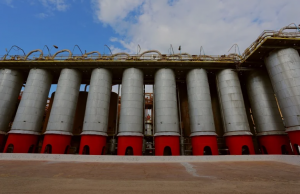Material handling plays a pivotal role in the alumina refining process. Efficient material handling allows for streamlined refinery operations, ensuring that the raw material (bauxite), work-in-progress goods and the finished product (refined alumina) can be transferred smoothly across the production line. The systems are designed in such a way that they can handle a wide variety of materials- from raw bauxite ore to refined alumina. Let us look at some of the main machines comprising the material handling system in an alumina refinery.
Importance of alumina refining in aluminium production – How did the process evolve with time?
Alumina is a versatile material. Though its refined form is mostly used in the aluminium industry for extracting primary metal, the mineral finds use in other sectors, too. The process involved in refining alumina from bauxite has undergone many changes because the traditional method generated a huge amount of waste – called red mud that caused substantial harm to the environment. The entire process has become more streamlined. Here are some of the benefits that refineries are reaping after integrating automation technology into their systems:
- Reduced manual effort and increased productivity
- Enhanced safety through the reduction of workers’ exposure to hazardous conditions.
- Remote monitoring of the refining process
Top 5 material handling systems used in alumina refineries:
1. Belt conveyor: Alumina refineries use belt conveyors to transfer bauxite ore to the refining site. These machines consist of a belt loop driven by a pulley. A flatbed keeps the belt in place. The belt conveyors reduce manual effort during the material handling process. The ore can also be transferred at a reasonably faster speed.
 Features:
Features:
- Large conveying capacity
- Long conveying distance
- Low operational expense
- Safe, easy, and reliable operations
Top manufacturers: Fenner, Intralox, Volta Belting Technology.
2. Pneumatic conveyor: A pneumatic conveyor can transfer alumina through an enclosed pipeline under high pressure and with a consistent gas flow. Pneumatic conveying is a cost-effective way of material handling during refining. It has a compact size and is relatively easy to operate.
Features:
- Cost-effective method of material handling
- Easy to operate
- Flexible design
- Low maintenance requirements
Top manufacturers: VAC-U-MAX, Spiroflow Systems, VOLKMANN, Whirl-Air-Flow Corporation
3. Bucket elevator: A bucket elevator is used to haul alumina vertically during refining. It uses reciprocating buckets to pick up alumina, move the material across a distance, unload it, and return to the initial position to pick up a new load. Bucket elevators come in different configurations and are known for their versatility.
Features:
- Easily configurable
- Compact and easy to handle
- High level of energy efficiency
Top manufacturers: 4B Components Ltd, Essmueller.Com, Satake Corporation
4. Vibratory feeder: The main job of a vibratory feeder is to move, feed, and convey alumina using different vibrations. This is done to ensure that the materials are properly oriented for addition to a production line. Vibratory feeders allow efficient and speedier material flow.
Features:
- Compact and easy to maintain
- Enhanced speed of material handling
- Custom designs are available
Top manufacturers: Eriez, Rodix Inc., Vibcon Corporation, MGS Machine Corporation.
5. Silos: Silos are used to securely store bulk quantities of alumina in the refining process for a considerable amount of time without compromising their quality. The silos are often fitted with mechanical equipment so that the materials can be easily unloaded when the need arises.
Features:
- Lightweight and affordable
- Simple assembly process
- Mechanisation options are available
Top manufacturers: AGI, Behlen Mfg. Co., IMAS, MILLTEC
The Alumina refining process is evolving…
The future of alumina refining will likely involve increased automation in material handling. This would reduce environmental waste generation while not hurting the profitability of the alumina refinery owners. Recently, one of the world’s leading aluminium producers, announced the development of a highly innovative process that could significantly reduce red mud generation during the alumina refining process. Once this newly developed process becomes operational, the bauxite residue can be reduced by 30%. This will not only result in producing high-quality alumina but will also improve the lives of the people working at the refineries.


